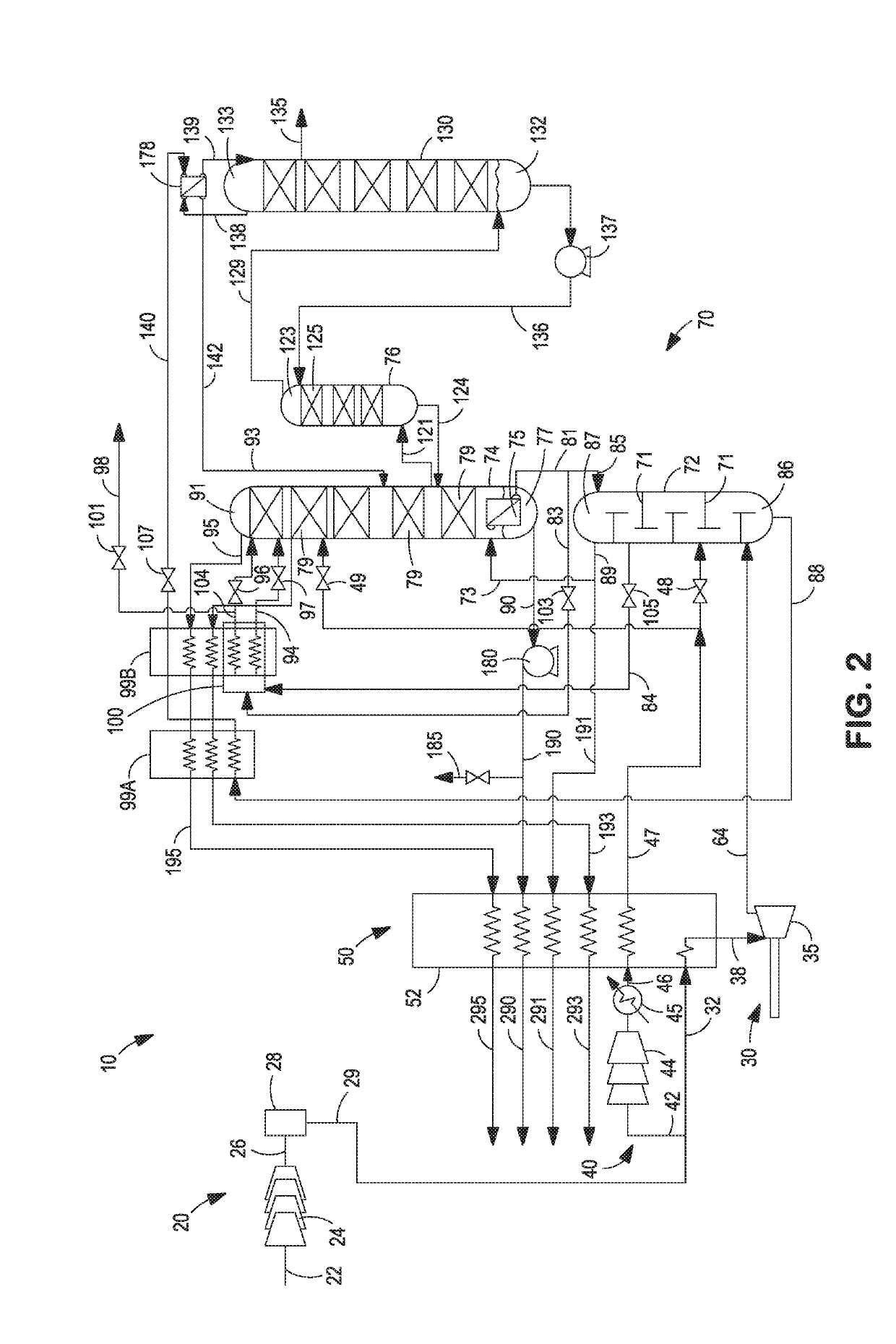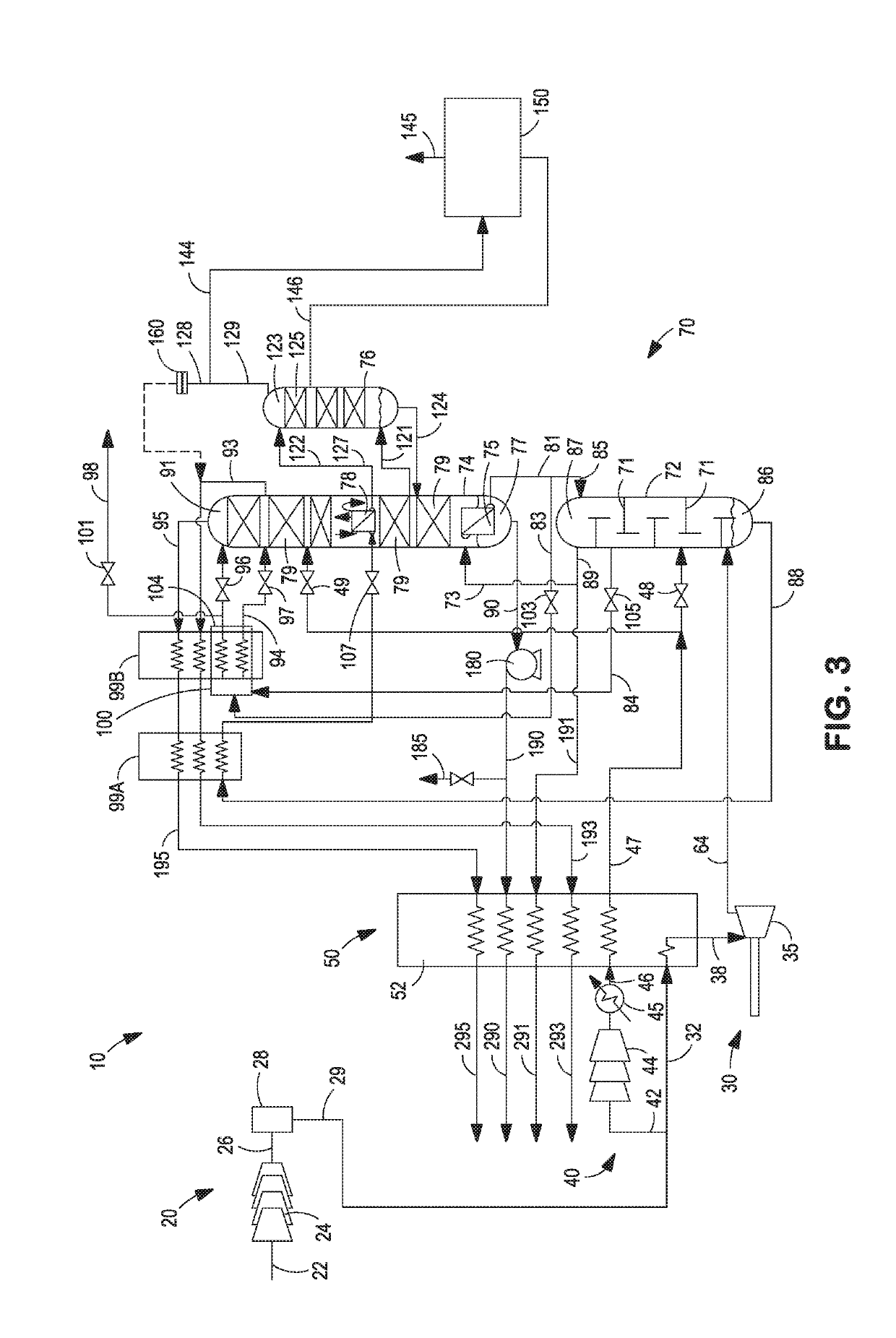System and method for flexible recovery of argon from a cryogenic air separation unit
- Summary
- Abstract
- Description
- Claims
- Application Information
AI Technical Summary
Benefits of technology
Problems solved by technology
Method used
Image
Examples
examples
[0072]For various embodiments of the present system and method for flexible recovery of argon, a number of process simulations were run using various air separation unit operating models to characterize: (i) the impact of shifting between ‘low argon’ operating mode and ‘high argon’ operating mode on overall power consumption / savings and argon recovery in a large oxygen producing air separation unit;(ii) the impact of drawing shelf vapor on power consumption / savings and argon recovery in a large oxygen producing air separation unit; and (iii) the impact of using various splits of dirty shelf nitrogen and clean shelf nitrogen as the reflux stream to the lower pressure column on the power consumption / savings and argon recovery of a large oxygen producing air separation unit.
[0073]Table 1 shows the results of the computer based process simulation for the present systems and associated methods described above. For the process simulations, a 1300 ton per day (TPD) pumped liquid oxygen pla...
PUM
 Login to View More
Login to View More Abstract
Description
Claims
Application Information
 Login to View More
Login to View More - R&D
- Intellectual Property
- Life Sciences
- Materials
- Tech Scout
- Unparalleled Data Quality
- Higher Quality Content
- 60% Fewer Hallucinations
Browse by: Latest US Patents, China's latest patents, Technical Efficacy Thesaurus, Application Domain, Technology Topic, Popular Technical Reports.
© 2025 PatSnap. All rights reserved.Legal|Privacy policy|Modern Slavery Act Transparency Statement|Sitemap|About US| Contact US: help@patsnap.com



